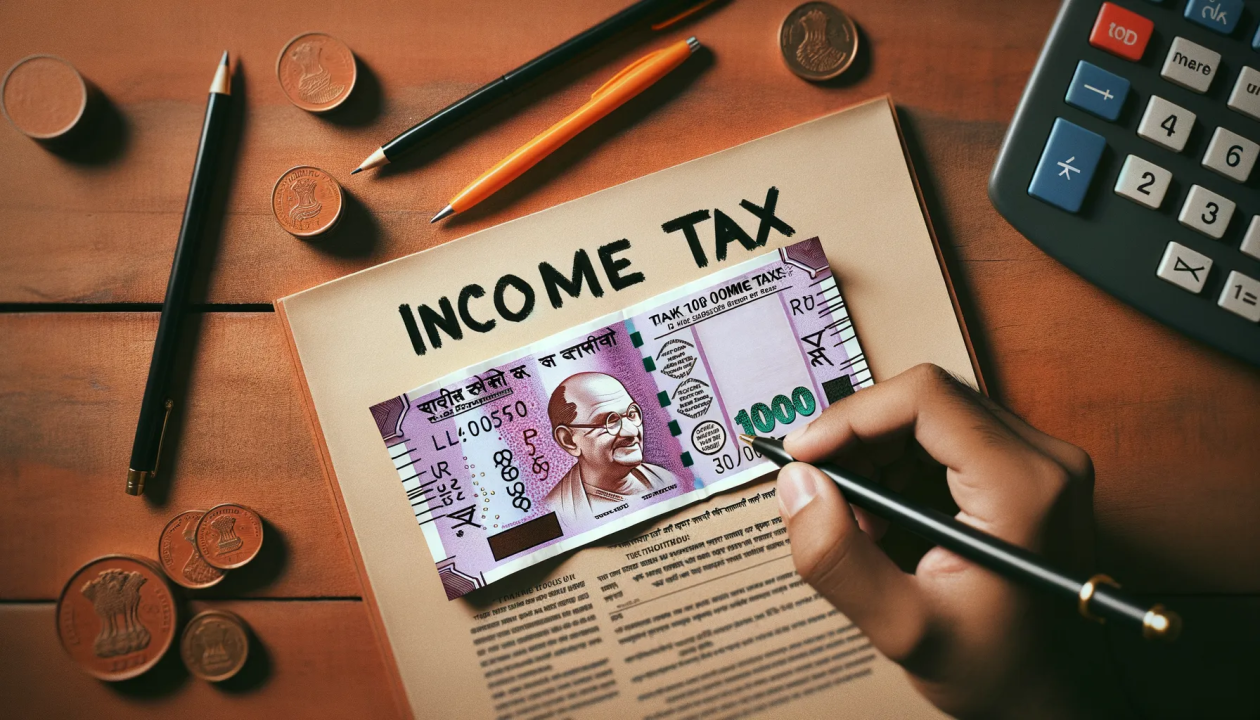Unraveling The Mystery Of Old And New Tax Regime — Investment Declarations, Part 1!
The A-to-Z of the New Tax Regime and What It Holds for You
Hello, dear readers! You might have heard the buzz around the new and old tax regimes, haven’t you? Going forward, from FY 24–25, the new tax regime will be the default tax regime. This means that unless and until an individual explicitly chooses the old tax regime, the person’s income will be taxed as per the new tax regime’s slabs. That means before your investment declarations kick in, you need to know which tax regime you are following and why :)
Decoding Taxes: The Vintage vs. The Vogue
Now, let’s sit by the financial fireplace and have a chat about what taxes are. In simple terms, tax is that annoying but essential chunk of your hard-earned money that you politely (because there’s no other way, really) give to the government so they can, in turn, use it to, well, run the country.
Under the old scheme, the tax rates are higher, but they come with a buffet of deductions and exemptions you can claim. Think of it as a thali where you can pick and choose your discounts — section 80C for investments, section 80D for medical insurance, and the list goes on.
Switch to the new regime, and you get lower tax rates, but say bye-bye to most deductions and exemptions. It’s like opting for a fixed menu — what you see is what you get, and there’s no à la carte, folks!
In order to make a clear distinction between the old and new tax regime, we need to know the differences between them, which apart from tax slabs are the deductions offered (or not offered).
The Deduction Deli: Deductions under various IT Act sections and much more…
Section 80C: The Savings Cornerstone
Tax-Saver FDs, NSC, and P.O.T.D. : The introverts of investments that like to stay locked in for 5 years with govt backed security but lesser interest rates and even lesser post tax & inflation adjusted returns.
Home Loan Principal: Because buying a home shouldn’t just give you a place to live but also a tax break. So any amount paid as home loan principal automatically falls under Section 80C.
Life Insurance and ULIP: Protecting life and savings with a double-edged sword, with tax deductions as the cherry on top. However we discourage buying insurance policy or mixed products for tax saving purposes. Best form of insurances are pure insurances such as term or health insurance as they put maximum percentage of premium to use for the intended purpose of insurance which the mixed products lack.
PPF, VPF and EPF: Good ol’ long-standing tax-saving instruments. Good thing about PPF albeit it’s relatively lower interest rate is the Exempt-Exempt-Exempt status offering compounding tax free returns, which in the long run, might be a game changer for you.
ELSS: The dashing and potentially high-return giving mutual funds with a tax-saving cloak. Probably the best tax saving options there is, provided you’ve the risk appetite for it.
Sukanya Samriddhi Yojana: For the girl child’s brighter future and your lighter tax burden. A do good thing which you should do anyways given the attractive interest rates and secure future for the girl child.
School Tuition Fees: Kids’ education that smartly cuts down your taxes too.
Senior Citizen Savings Scheme (SCSS): For the young at heart but wise of age (read >60), a tax breather in the golden years. Again it might offer a slightly lower interest rate compared to FDs given the repo-rate scenario however provides slew of benefits such as quarterly returns, extensions etc. which help in retirement planning.
And more…
Section 80D: Health is Wealth
Medical Insurance Premiums: Spend a bit on premiums today, save on taxes, and keep the doctor away.
Preventive Health Check-ups: The tax system cares about your wellbeing too, up to Rs 5,000 worth!
Treatment of Disabled Dependents (80DD): Humanity isn’t the only reward when caring for disabled dependents, as the taxman gives a little respite.
Section 80G: The Giving Hand
Charitable Contributions: When you give to charity, the government gives back, at least in the form of tax deductions. There are different institutes offering 50% — 100% tax deductions
Donating to Political Parties (80GGC): Politics isn’t just for debates, it’s for deductions, too. And this election season you can make full use of it.
Section 80E, 24: Have you take a loan? You are in luck!
Interest on Education Loan (80E): Investing in your or your child’s brainpower comes with a tax incentive. However, the deduction is available only for 8 years, starting from the year in which one starts repaying the loan or until the interest is fully repaid, whichever is earlier.
Section 24b, 80EE, 80EEA: The interest paid on the home loan EMI for the year can be claimed as a deduction from your total income up to a maximum of Rs 2 lakh under Section 24 and few more deductions depending upon conditions laid out by govt.
Section 10 & Other Deductions: The Miscellany
LTA, Allowance, Mobile Reimbursements, and Food Coupons: The little joys of being employed — tax-exempt travel, and food moments, and yes, even your monthly mobile bills can breathe free of taxes.
House Rent Allowance (HRA): The relief for those in rented abodes — because not everyone wants to live with their parents until the end of time.
Tax Free Interest (80TTA and 80TTB): This section allows you to claim deductions on savings accounts deposits that are held in a post office, bank, or cooperative society. The deduction is upto Rs10K (80TTA) and for Sr. Citizens it is upto Rs 50K (80TTB).
Are there any deductions in New Tax Regime as well ?
In the new tax playground, think of exemptions as a rare species; they’re there, but not in abundance.
" You get a pat on the back (in tax language) for your employer’s contribution to the NPS — that’s up to 10% of your salary. Got a house that you’ve let out? You can claim a standard cut of 30% on the net rent you collect. Paying interest on a home loan? That’s deductible from your rental income too. And for our Divyang friends, travel allowances are there to make the daily commute smoother. Official travel and transfer costs? Consider them covered. Plus, daily allowances for work-related travel are still on the plate. And that’s it."
Whittling Down the Jargon
Now, the aim here is to make you ‘tax-savvy’, not to leave you scratching your head with jargon that sounds like it’s straight out of a dense legal document.
Choose the old regime if you’re the type who’s likely to have proof of investments and expenses lined up like ducks in a row. The new regime? It’s for those who prefer minimalism, where you get lower taxes without the hassle of proving your financial wisdom through various investments.
We’ll be back with more detailed breakdown by doing multiple comparisons between old and new tax regime based on tax rates and identical incomes for you to make a clear distinction and decision on which one to choose. Till then, stay curious, stay informed.
Table of Content
- The A-to-Z of the New Tax Regime and What It Holds for You
- Decoding Taxes: The Vintage vs. The Vogue
- The Deduction Deli: Deductions under various IT Act sections and much more
- Are there any deductions in New Tax Regime as well ?
- Whittling Down the Jargon



